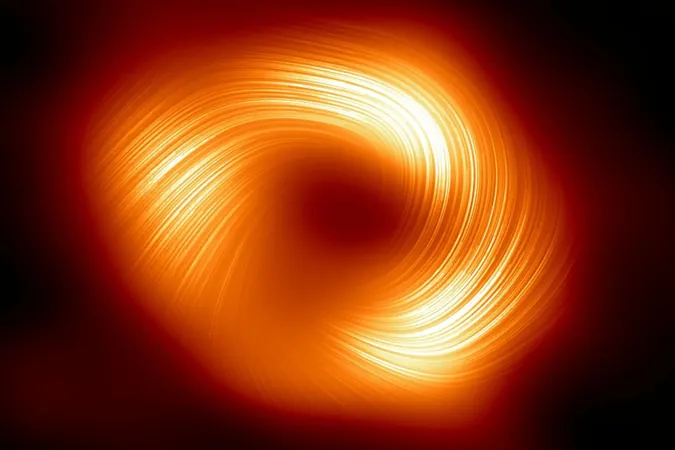
Could Axion Dark Matter Make Space-Time Ring Like a Bell? New Research Explores Exciting Possibilities!
2024-11-25
Author: Olivia
Recent groundbreaking research has proposed that dark matter, if composed of axions, could have the astounding ability to cause the fabric of space-time to resonate like a bell. This phenomenon is thought to occur when these elusive particles siphon energy from black holes.
Axions are a theoretical elementary particle first suggested several decades ago to elucidate odd behaviors observed in the strong nuclear force. Remarkably, these particles remain undetected in laboratory conditions despite numerous attempts. This mysterious nature aligns perfectly with the properties of dark matter, which is characterized by its minimal interaction with normal matter.
If dark matter indeed consists of axions or similar particles, it would exhibit extraordinary characteristics. Theoretical models suggest that axions could be extraordinarily light—potentially one billionth the mass of an electron, making them the lightest known particles. This featherweight nature could lead to unique quantum effects manifesting over vast cosmic distances, causing these particles to behave more like waves than conventional particles.
One particularly fascinating aspect of axion behavior involves their interaction with rotating black holes. A phenomenon known as super-radiance allows these dark matter particles to extract angular momentum from black holes, creating a surrounding halo of dark matter rather than being drawn into the black hole's event horizon. This buildup creates an invisible 'shroud' around the black hole, opening up new avenues for understanding cosmic structures.
However, the research delineates an intriguing twist: once a black hole can no longer supply energy, the dark matter would effectively evaporate. This evaporation process could emit significant gravitational waves, reminiscent of a ringing bell, sending ripples through the space-time continuum.
These gravitational waves would possess a unique signature, distinguishing them from those produced by more commonly studied black hole mergers. Although they would be considerably weaker, the frequencies could still fall within the detection ranges of both current and future gravitational wave observatories.
To test this theory, researchers are urging scientists to meticulously analyze existing data for potential signs of these detectable waves surrounding black holes. Even if no evidence surfaces initially, there remains a prospect to enhance forthcoming experiments aimed at uncovering this extraordinary signal.
Could we be on the brink of a monumental discovery that reshapes our understanding of dark matter and the universe? Keep your eyes peeled as astronomers delve deeper into this enticing avenue of cosmic exploration!









 Brasil (PT)
Brasil (PT)
 Canada (EN)
Canada (EN)
 Chile (ES)
Chile (ES)
 España (ES)
España (ES)
 France (FR)
France (FR)
 Hong Kong (EN)
Hong Kong (EN)
 Italia (IT)
Italia (IT)
 日本 (JA)
日本 (JA)
 Magyarország (HU)
Magyarország (HU)
 Norge (NO)
Norge (NO)
 Polska (PL)
Polska (PL)
 Schweiz (DE)
Schweiz (DE)
 Singapore (EN)
Singapore (EN)
 Sverige (SV)
Sverige (SV)
 Suomi (FI)
Suomi (FI)
 Türkiye (TR)
Türkiye (TR)